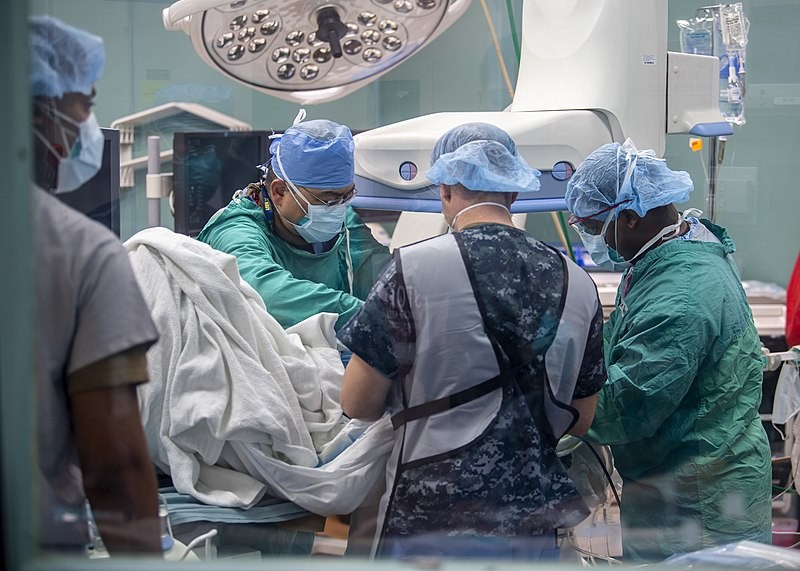Alzheimer's disease currently affects 32 million people around the world, contributing to 60-70% of cases of dementia. As the most common neurodegenerative disorder, this disease is characterized by a progressive decline in memory and cognition over decades.

(Photo: Wikimedia Commons/ Navy Medicine from Washington, DC, USA)
There is still currently no cure for Alzheimer's disease, although there are some available medications that can help slow disease progression and alleviate symptoms. In recent years, promising new therapies have emerged to address this unmet medical need.
Opening the Blood-Brain Barrier
Experts from West Virginia University's Rockefeller Neuroscience Institute have found a way to help Alzheimer's medication reach the interior of the brain faster. They aim to boost some of the new treatments which take a long time to work. Led by Dr. Ali Rezai, the novel experiment was an initial attempt in just three patients, giving them a head start.
The study focused on the blood-brain barrier, a protective lining in blood vessels that prevents microbes and other damaging substances from leaching from the bloodstream into the brain. However, this barrier also blocks drugs for tumors, Alzheimer's, and other neurologic diseases. As a result, higher doses are required for longer periods to reach the target region of the brain.
The research team used focused ultrasound technology to breach this protective shield, allowing microscopic bubbles to be injected into the bloodstream. Afterward, sound waves were beamed through a helmet-like device to a specific area of the brain. As the pulses of energy vibrated the microbubbles, they loosen gaps in the barrier enough for medications to slip in.
Previous studies suggest that this technology can safely poke tiny holes, which seal up in 48 hours. Rezai and her team took a step further by administering an Alzheimer's drug at the same time.
Some Alzheimer's drugs on the market promise to slow the worsening of the neurodegenerative disease. They are even designed to clear away a sticky protein known as beta-amyloid, which builds up in particular brain regions. However, they require IV infusions every few weeks for at least 18 months.
The researchers gave three patients mild monthly doses of Aduhelm for six months. After each IV, they focused the ultrasound on a certain amyloid-clogged part of each brain, allowing the blood-brain barrier to open so more of the dose could enter the spot.
PET scans reveal the difference in the amyloid levels of the patients before and after the medication period. There was 32% greater plaque reduction in areas where the blood-brain barrier was breached compared to the same region on the opposite side of the brain.
What is Focused Ultrasound?
Focused ultrasound is a procedure that uses sound waves to treat some conditions. Also known as high-intensity focused ultrasound ultrasound (HIFU), it involves heating up and destroying or changing tiny patches of the body tissues without harming the surrounding tissue.
HIFU resembles the mechanism of a magnifying glass that focuses beams of light on a single point. It uses an acoustic lens to concentrate multiple sound waves on a point in a person's body. Healthcare providers typically use magnetic resonance imaging (MRI) to guide the waves and target the diseased tissue.
RELATED ARTICLE: Alzheimer's Disease May Not Be a Brain Damage But an Autoimmune Condition, Study Says
Check out more news and information on Alzheimer's Disease in Science Times.











!['Cosmic Glitch' in Einstein's Theory of General Relativity Could Be Explained in This New Scientific Tweak [Study]](https://1721181113.rsc.cdn77.org/data/thumbs/full/53435/258/146/50/40/cosmic-glitch-in-einsteins-theory-of-general-relativity-could-be-explained-in-this-new-scientific-tweak-study.jpeg)


